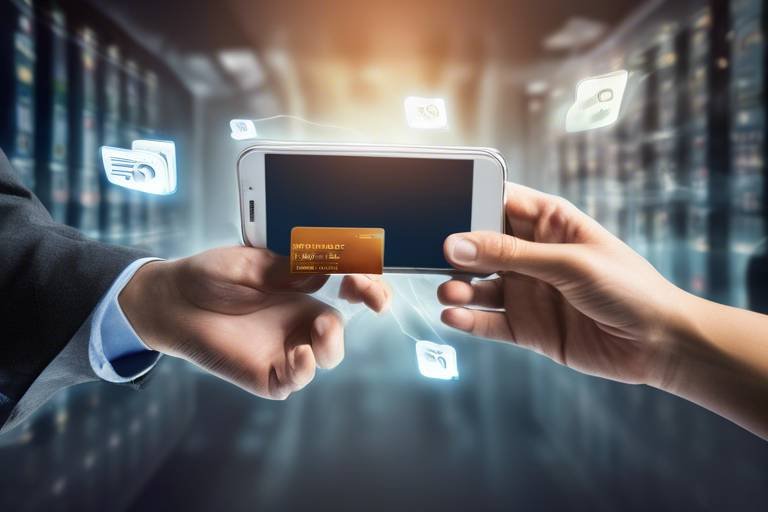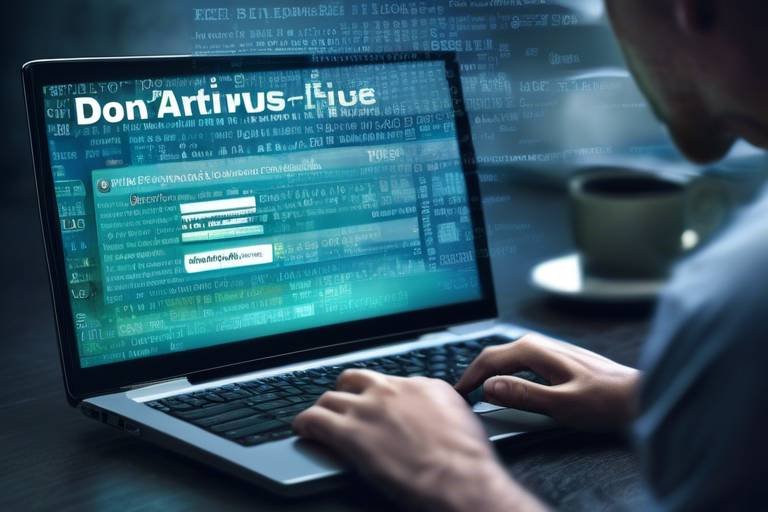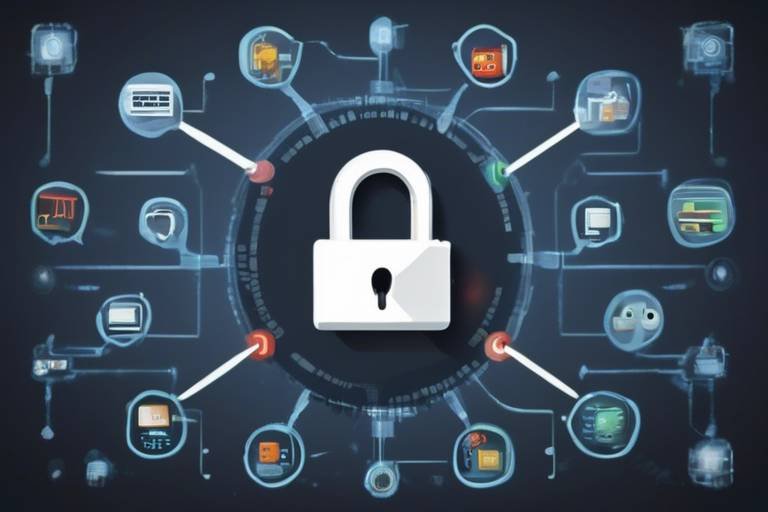How to Secure Your Smartphone from Hackers
In our fast-paced digital world, smartphones have become an integral part of our daily lives, serving as our communication hubs, entertainment devices, and even our wallets. However, with this convenience comes a significant risk: the potential for hacking. Every time you unlock your phone, you might unknowingly be opening the door to hackers who are eager to exploit vulnerabilities. But fear not! This article is here to arm you with essential tips and strategies to help protect your smartphone from potential hacking threats, ensuring your personal information remains safe and secure.
To effectively secure your smartphone, it’s crucial to first understand the common vulnerabilities that hackers exploit. These vulnerabilities can stem from various sources, including:
- Software Flaws: Bugs in your operating system or applications can create openings for hackers.
- Weak Passwords: Using easily guessable passwords can make it a walk in the park for cybercriminals.
- Unsecured Networks: Connecting to public Wi-Fi without protection can expose your data to prying eyes.
By recognizing these vulnerabilities, you can take proactive steps to fortify your smartphone against potential threats.
Keeping your smartphone's operating system and apps updated is crucial for security. Think of updates as a shield that protects you from the latest threats. Each update often includes patches for known vulnerabilities, making it imperative to stay current. Regular updates can significantly reduce the risk of your device being compromised. It's like getting a flu shot; you want to be protected against the latest strains of viruses!
One of the easiest ways to ensure your device is always protected is by enabling automatic updates. This feature allows your smartphone to download and install updates without requiring your input. Imagine never having to worry about whether you missed an important security patch again!
If automatic updates aren’t your thing, you can still perform manual checks. Simply navigate to your settings, find the “Software Update” section, and see if any updates are available. It’s a quick process that can save you from potential headaches down the line.
Managing update notifications effectively is also important. Make sure you allow notifications for updates so that you never miss out on critical security patches. Ignoring these notifications can lead to vulnerabilities that hackers are just waiting to exploit.
Another fundamental aspect of securing your smartphone is the use of strong, unique passwords. Think of your password as the key to your house; would you want to use a key that anyone could easily duplicate? Strong passwords should be a mix of letters, numbers, and symbols, making it difficult for hackers to crack them. Additionally, avoid using the same password across multiple accounts; if one gets compromised, the others could follow suit.
Two-factor authentication (2FA) is like having a second lock on your door. Even if someone gets hold of your password, they still need that second piece of information to gain access. This extra layer of security is essential for protecting your accounts from hackers. Enabling 2FA can give you peace of mind, knowing that your sensitive information is better safeguarded.
Setting up 2FA is typically straightforward. For most popular apps and services, you can find the option in your account settings. Follow the prompts to link your phone number or an authentication app, and voila! You're one step closer to securing your accounts.
The advantages of using two-factor authentication are numerous. Not only does it significantly increase your security, but it also provides peace of mind when accessing sensitive information. In a world where data breaches are commonplace, having that extra layer of protection can make all the difference.
Your smartphone can only be as secure as the networks it connects to. Using secure Wi-Fi connections and Virtual Private Networks (VPNs) can shield your device from potential hacking attempts while online. Think of a VPN as a secure tunnel that encrypts your data, making it nearly impossible for hackers to intercept.
While public Wi-Fi is convenient, it can also be a hacker's playground. Avoid conducting sensitive transactions, such as online banking, while connected to public networks. If you must use public Wi-Fi, always connect through a VPN for added security.
When selecting a VPN service, look for one that offers robust encryption and a solid reputation. A trustworthy VPN acts as a guardian of your data, ensuring that your online activities remain private and secure. Don’t settle for less; your data is worth protecting!
- What are the signs that my smartphone has been hacked? Look for unusual behavior, such as unexpected app installations, battery drain, or strange messages.
- How often should I update my smartphone? Regularly check for updates at least once a month, or enable automatic updates to ensure you’re always protected.
- Is using a password manager safe? Yes, a reputable password manager can help you create and store strong passwords securely.

Understanding Smartphone Vulnerabilities
In today's digital landscape, our smartphones are like mini-computers that we carry in our pockets. They hold a treasure trove of personal information, from banking details to private conversations. But just like any other device, smartphones are not immune to vulnerabilities. Hackers are constantly on the lookout for ways to exploit these weaknesses, and understanding them is the first step towards safeguarding your device.
One of the most common vulnerabilities arises from software flaws. These can be bugs in the operating system or in the applications we use daily. When developers release software, they often miss certain vulnerabilities that hackers can exploit. This is why keeping your software updated is so crucial.
Another significant vulnerability comes from weak passwords. Many users still opt for easily guessable passwords like "123456" or "password." This is akin to leaving your front door wide open; it invites trouble. A strong password should be a mix of uppercase and lowercase letters, numbers, and special characters.
Moreover, unsecured networks pose a serious risk, especially public Wi-Fi connections. When you connect to a public network, your data can be intercepted by anyone else on that network, making it an open invitation for hackers. Imagine sending a postcard with your personal information written on it; anyone can read it! This is why it’s essential to be cautious when using public Wi-Fi.
In summary, here are some of the key vulnerabilities to be aware of:
- Software Flaws: Bugs and vulnerabilities in the operating system or apps.
- Weak Passwords: Easily guessable passwords that can be cracked in seconds.
- Unsecured Networks: Risks associated with using public Wi-Fi without protection.
By recognizing these vulnerabilities, you can take proactive steps to secure your smartphone. It’s like being a detective; the more you know about the potential threats, the better you can defend against them. Always remember, in the world of cybersecurity, knowledge is power!

Importance of Software Updates
In today's fast-paced digital world, keeping your smartphone secure is not just a luxury—it's a necessity. One of the most critical aspects of smartphone security is the . You might wonder why these updates are so important. Well, think of your smartphone's software as a fortress. Over time, new vulnerabilities are discovered, and without regular updates, your fortress becomes susceptible to attacks. Software updates are like reinforcements that fix these vulnerabilities and strengthen your defenses.
Every time you receive a notification about an update, it's a signal that your device needs a little TLC. These updates often include patches that address security flaws that hackers love to exploit. Ignoring these updates is akin to leaving the front door of your house wide open; it invites trouble. For instance, a recent study revealed that over 60% of cyber-attacks target outdated software. This statistic should be a wake-up call for anyone who thinks they can afford to skip updates.
Moreover, updates can also come with new features and enhancements that improve your overall user experience. Imagine getting a shiny new tool that not only makes your smartphone safer but also more enjoyable to use. It's a win-win! However, the key is to stay proactive. You can either enable automatic updates or regularly check for updates manually. Let’s explore both options.
Enabling automatic updates is one of the easiest ways to ensure your smartphone is always protected. With this feature, your device will automatically download and install updates as soon as they are available, saving you the hassle of having to remember to do it yourself. This is especially useful for busy individuals who might forget to check for updates regularly. Just like setting your coffee maker to brew automatically, it makes your life easier while ensuring you stay secure.
If you prefer more control over your updates, performing manual checks is a solid option. To do this, navigate to your smartphone's settings, look for the 'Software Update' or 'System Update' section, and follow the prompts. This way, you can decide when to install updates, but remember, the sooner you update, the better your security. It’s like getting a flu shot; the sooner you do it, the less likely you are to get sick!
Managing update notifications effectively is crucial. You want to ensure that you don’t miss important alerts while avoiding being bombarded by constant reminders. Most smartphones allow you to customize notification settings. You can choose to be notified only for critical updates or all updates. This way, you stay informed without feeling overwhelmed. Remember, being informed is half the battle won.
In summary, software updates are your smartphone's best friend when it comes to security. They fix vulnerabilities, enhance features, and keep your device running smoothly. By enabling automatic updates or regularly checking for updates manually, you can significantly reduce the risk of falling victim to cyber threats. So, the next time you see that update notification, don’t ignore it—embrace it!
- Why are software updates important?
Software updates are crucial because they fix security vulnerabilities, improve device performance, and add new features. - How often should I update my smartphone?
It's best to update your smartphone as soon as updates are available, whether automatically or manually. - What happens if I ignore updates?
Ignoring updates can leave your device vulnerable to hacking, malware, and other security threats. - Are automatic updates safe?
Yes, automatic updates are generally safe and are recommended to keep your device secure without manual intervention.

Automatic Updates
In today's fast-paced digital world, keeping your smartphone secure is more crucial than ever, and one of the easiest ways to do this is by enabling . Think of automatic updates as your smartphone’s personal bodyguard, always on the lookout for vulnerabilities and ready to patch them up before hackers can exploit them. By allowing your device to update itself automatically, you ensure that it’s always equipped with the latest security enhancements and bug fixes, without you having to lift a finger.
But you might be wondering, why are these updates so important? Well, every time a new vulnerability is discovered, software developers rush to create a fix. If you’re not updating your smartphone regularly, you could be leaving the door wide open for cybercriminals. Automatic updates take the hassle out of this process, ensuring that you receive these critical patches as soon as they’re available.
Many smartphones come with the option for automatic updates pre-enabled, but if yours doesn’t, here’s how you can set it up:
- Go to your Settings app.
- Scroll down and select Software Update.
- Look for the option that says Download and Install or .
- Toggle the switch to enable it.
By following these simple steps, you can rest easy knowing that your device is always up-to-date with the latest security measures. However, it’s also important to keep an eye on your device’s performance. Sometimes, updates may introduce new features or changes that could affect how your smartphone operates. If you notice any significant issues after an update, don’t hesitate to check online for solutions or consider rolling back to the previous version if necessary.
In addition to automatic updates, it’s wise to perform manual checks occasionally. This ensures that you haven’t missed any crucial updates that may have been released recently. The process is straightforward:
- Navigate to the Settings app once again.
- Select Software Update.
- Tap on Check for Updates.
By frequently checking for updates, you can further enhance your smartphone’s security. Remember, in the battle against hackers, staying one step ahead is vital. So, make it a habit to ensure that your automatic updates are activated and that you’re regularly checking for any missed updates. Your smartphone will thank you, and so will your peace of mind.

Manual Update Checks
Even though automatic updates are a fantastic way to ensure your smartphone stays secure without you lifting a finger, it’s still essential to know how to perform . Think of it as a routine health check-up for your device; just like you wouldn’t rely solely on a doctor to monitor your health, you shouldn’t rely solely on automatic updates for your smartphone’s security.
To manually check for updates, follow these simple steps, which can vary slightly depending on whether you use an Android or an iOS device:
- For Android:
Go to Settings > System > System Update. Here, your device will automatically check for any available updates. If an update is available, you’ll see a prompt to download and install it. Make sure your device is connected to Wi-Fi and has sufficient battery life before proceeding.
- For iOS:
Navigate to Settings > General > Software Update. Your iPhone will search for any available updates. If an update is found, tap Download and Install. Again, ensure you are connected to Wi-Fi and have enough battery life to complete the installation.
Performing these checks regularly can make a world of difference in your smartphone's security. Ideally, you should check for updates at least once a month. This practice not only keeps your operating system secure but also ensures your apps are running smoothly with the latest features and bug fixes. Remember, keeping your software up to date is like putting on armor against potential threats. The more layers you have, the better protected you are!
In addition to checking for system updates, don’t forget to look for updates for your individual apps. Many apps have their own update mechanisms, and failing to update them can leave you vulnerable. Most app stores will notify you of available updates, but you can also go directly to the app store and check for updates manually. Keeping your apps updated is just as crucial as the operating system, as many vulnerabilities are often found in third-party applications.
In conclusion, making manual update checks a part of your smartphone maintenance routine can significantly enhance your device's security posture. It’s a small effort that pays off big time in protecting your personal information and ensuring your smartphone runs efficiently. So, set a reminder, mark your calendar, or make it part of your monthly tech check-up—whatever it takes to keep your device secure!
Q: How often should I check for updates?
A: Ideally, check for updates at least once a month. However, if you receive a notification about an available update, it’s best to act on it immediately.
Q: What if my smartphone says it’s up to date?
A: If your device indicates that it’s up to date, that’s great! However, it’s still a good idea to check back periodically to ensure no new updates have been released since your last check.
Q: Can I skip updates?
A: While you can technically skip updates, doing so can expose your device to security vulnerabilities. It’s highly recommended to keep your device updated to protect against potential hacking threats.

Update Notifications
When it comes to smartphone security, are your best friend. They serve as gentle reminders from your device, urging you to stay vigilant and keep your software up to date. Ignoring these notifications can be akin to leaving your front door wide open while you’re away; it invites unwanted guests—hackers—into your digital life. So, how do you manage these notifications effectively? Well, it’s simpler than you might think!
First off, you should ensure that your smartphone is set to alert you whenever a new update is available. This way, you won’t have to constantly check for updates manually. Most smartphones allow you to customize how and when you receive these notifications. You can choose to be notified immediately or at a scheduled time that works best for you. For example, if you prefer to receive notifications during your downtime, you can adjust the settings accordingly.
But what happens if you accidentally dismiss an important update notification? Don’t panic! Most devices keep a log of missed notifications, so you can easily check back to see if there’s an update you need to install. Additionally, you can often find a dedicated section in your settings that lists available updates, allowing you to catch up on what you may have missed.
Moreover, it’s essential to keep in mind that not all updates are created equal. Some might be minor bug fixes, while others could patch serious security vulnerabilities. Therefore, if you receive a notification about a critical update, treat it with the urgency it deserves. Ignoring such updates can leave you exposed to potential threats.
To help you better understand the importance of update notifications, here’s a quick summary of what to look out for:
- Enable Notifications: Always ensure that your device is set to notify you about updates.
- Check for Missed Updates: Don’t forget to look back at missed notifications to catch up.
- Prioritize Critical Updates: Pay special attention to security updates as they protect you from vulnerabilities.
In conclusion, managing update notifications effectively is a crucial step in safeguarding your smartphone. By staying informed and proactive, you can significantly reduce your risk of falling victim to hacking attempts. Remember, in the digital world, a little diligence goes a long way in keeping your personal information secure!
Q: What should I do if I miss an update notification?
A: Don't worry! Most smartphones keep a log of missed notifications. You can check your settings for available updates and install them as needed.
Q: Are all updates important?
A: Not all updates are critical, but security updates should always be prioritized as they address vulnerabilities that could be exploited by hackers.
Q: Can I set my phone to automatically install updates?
A: Yes, many smartphones have an option to enable automatic updates. This ensures that you always have the latest security patches without needing to manually check.

Choosing Strong Passwords
When it comes to protecting your smartphone, one of the most critical aspects is ensuring that you use strong passwords. Think of your password as the key to your digital home; if it’s weak, anyone can waltz right in. A strong password is not just a random collection of letters, numbers, and symbols; it’s a carefully crafted combination that makes it nearly impossible for hackers to guess. So, how do you go about creating a password that stands up to the test?
First and foremost, avoid using obvious choices like your name, birthday, or even common words. Instead, consider using a passphrase—a series of random words strung together. For example, "PurpleElephantDances@Midnight" is much harder to crack than "123456". It's not just about complexity; it's about length too. The longer your password, the tougher it is for hackers to break through.
Another effective strategy is to incorporate a mix of uppercase and lowercase letters, numbers, and special characters. This combination can significantly enhance the strength of your password. Here’s a simple rule of thumb: the more varied the characters, the better. For instance, instead of "MyDogIsCute", you could use "Myd0g!sC@te!". This variation not only makes your password stronger but also more memorable.
To help you visualize how to craft a strong password, here’s a quick table that summarizes the key elements:
| Element | Example | Tips |
|---|---|---|
| Length | 12+ characters | The longer, the better! |
| Character Variety | Mix of letters, numbers, symbols | Avoid predictable patterns |
| Unpredictability | Random words or phrases | Use a passphrase for ease of recall |
Additionally, consider using a password manager. This handy tool can generate and store complex passwords for you, so you don’t have to remember each one. It’s like having a personal vault for your digital keys! With a password manager, you can use unique passwords for every account, which is crucial. If one account gets compromised, your other accounts remain safe.
Lastly, remember to change your passwords regularly. Even the strongest passwords can become vulnerable over time, especially if there’s a data breach at a service you use. Setting a reminder to change your passwords every few months can make a world of difference in your security.

Utilizing Two-Factor Authentication
In today's digital landscape, simply having a strong password isn't enough to keep your accounts safe from prying eyes. That's where Two-Factor Authentication (2FA) comes into play. Think of it as a double lock on your front door; even if someone has the key (your password), they still can't get in without the second form of verification. This additional layer of security is crucial because hackers are constantly developing new methods to breach accounts, and relying solely on passwords is like leaving your window wide open while you sleep.
So, how does 2FA work? Typically, it combines something you know (your password) with something you have (like your smartphone). When you log into an account, after entering your password, you will receive a code via SMS, email, or an authentication app. You need to enter this code to gain access. This means that even if a hacker manages to steal your password, they would still require that second piece of information to compromise your account.
Enabling Two-Factor Authentication is a straightforward process, and most major platforms offer it. Here’s a quick breakdown of the steps involved:
- Go to your account settings.
- Look for security options.
- Select Two-Factor Authentication and follow the prompts to set it up.
Once you’ve enabled 2FA, you’ll notice a significant boost in your account's security. But it’s essential to choose the right method for receiving your second factor. While SMS codes are common, they can be intercepted. Instead, consider using an authentication app like Google Authenticator or Authy, which generates time-sensitive codes that are much harder for hackers to access.
Finally, let’s talk about the benefits of Two-Factor Authentication. Not only does it provide enhanced security, but it also gives you peace of mind. Knowing that your accounts are protected by an additional barrier can help alleviate the anxiety that comes with online activities. In a world where data breaches are commonplace, implementing 2FA is a proactive step toward safeguarding your personal information.
| Question | Answer |
|---|---|
| What is Two-Factor Authentication? | It's a security process that requires two different forms of identification to access an account. |
| Is Two-Factor Authentication necessary? | Yes, it significantly enhances the security of your accounts, making unauthorized access much more difficult. |
| Can I use Two-Factor Authentication on all apps? | Most major apps and services offer 2FA, but it's always good to check the security settings of each platform. |

Setting Up Two-Factor Authentication
Setting up two-factor authentication (2FA) on your smartphone is one of the best ways to enhance your security and protect your sensitive information from unauthorized access. Think of it as adding a second lock to your front door—while a strong password is essential, 2FA provides that extra layer of security that can deter even the most determined hackers. So, how do you go about enabling this feature? Let’s break it down step by step.
First, you’ll want to identify the apps and services that you use most frequently, especially those that contain sensitive information such as banking apps, email accounts, and social media platforms. Most major services offer 2FA as an option. Here’s a quick guide on how to set it up:
- Step 1: Open the app or website where you want to enable 2FA.
- Step 2: Navigate to the security settings. This is usually found in the account settings menu.
- Step 3: Look for an option labeled "Two-Factor Authentication," "Two-Step Verification," or something similar.
- Step 4: Follow the prompts to enable 2FA. You may be asked to enter your password again for security purposes.
- Step 5: Choose your preferred method of receiving the second factor: via a text message, an authentication app (like Google Authenticator or Authy), or an email.
- Step 6: If you opt for an authentication app, download it, scan the QR code provided, and save your backup codes in a secure place.
Once you’ve completed these steps, 2FA will be activated. The next time you log in, you’ll enter your password as usual, but then you’ll also need to provide the second factor—this could be a code sent to your phone or generated by your authentication app. This process may seem tedious, but it’s a small price to pay for the peace of mind that comes with knowing your accounts are more secure.
Now, let’s discuss the benefits of enabling 2FA. Not only does it significantly reduce the risk of unauthorized access, but it also acts as a deterrent. If a hacker somehow gets hold of your password, they’ll still be unable to access your account without that second form of identification. Additionally, many services will notify you of any login attempts from unfamiliar devices, giving you the chance to act quickly if something seems off. It’s like having an alarm system that alerts you the moment someone tries to break in.
In summary, setting up two-factor authentication is a straightforward yet powerful way to protect your personal information. By following the steps outlined above, you can significantly enhance your smartphone's security and keep those pesky hackers at bay.
Here are some common questions regarding two-factor authentication that you might find useful:
- What if I lose my phone? - If you lose your phone, most services will provide backup codes when you set up 2FA. Store these codes in a safe place.
- Can I use 2FA on all my apps? - While many popular apps support 2FA, not all do. Check the security settings of each app to see if it's available.
- Does 2FA slow down my login process? - Yes, it adds an extra step, but the added security is worth the minor inconvenience.

Benefits of Two-Factor Authentication
When it comes to securing your online accounts, two-factor authentication (2FA) is like adding a robust lock to your front door. It significantly enhances your security by requiring not just a password, but also a second piece of information to verify your identity. This additional layer of protection makes it much harder for hackers to gain unauthorized access to your accounts. Think of it as needing both a key and a fingerprint to enter your home; even if someone has your key (password), they still can’t get in without your fingerprint (second factor).
One of the most compelling benefits of 2FA is that it drastically reduces the risk of account breaches. According to recent studies, accounts with two-factor authentication enabled are nearly 99% less likely to be compromised than those without it. This statistic alone should make you reconsider the security measures you currently have in place. Imagine the peace of mind that comes from knowing that even if a hacker gets hold of your password, they still can’t access your sensitive information without that second factor.
Moreover, two-factor authentication is often simple to set up and use. Most popular platforms, such as Google, Facebook, and Twitter, offer easy-to-follow instructions for enabling 2FA. You can typically choose from a variety of second factors, such as a text message, an authentication app, or even biometric data like fingerprints or facial recognition. This flexibility means you can select a method that you find most convenient. For example, using an authentication app like Google Authenticator can be a quick and secure way to generate time-sensitive codes that you need to enter along with your password.
Another significant advantage is that 2FA helps you keep track of your login attempts. Many services will notify you whenever a login attempt is made from an unrecognized device or location. This feature acts as an early warning system, allowing you to take immediate action—like changing your password or locking your account—if something seems off. It’s like having a security camera that alerts you when someone is trying to enter your home without permission.
In summary, the benefits of two-factor authentication are vast and impactful. By implementing 2FA, you gain:
- Enhanced Security: Adds an extra layer of protection against unauthorized access.
- Peace of Mind: Reduces the likelihood of account breaches significantly.
- Convenience: Easy to set up and use with various options available.
- Monitoring: Alerts you to suspicious login attempts.
Ultimately, investing a little time in setting up two-factor authentication can save you a lot of headaches in the future. In a world where our personal information is constantly at risk, it’s a small but mighty step toward safeguarding your digital life.
Q: What is two-factor authentication?
A: Two-factor authentication is a security process that requires two different forms of identification before granting access to an account. Typically, this includes something you know (like a password) and something you have (like a code sent to your phone).
Q: Is two-factor authentication necessary?
A: While not mandatory, enabling two-factor authentication is highly recommended as it significantly increases your account security and protects your sensitive information from unauthorized access.
Q: Can I use two-factor authentication on all my accounts?
A: Most major online services offer two-factor authentication, but it's essential to check the settings of each service to see if it’s available and to enable it for added security.
Q: What should I do if I lose access to my second factor?
A: Most services provide backup codes or recovery options when setting up 2FA. It's advisable to store these codes in a secure place. If you lose access to your second factor, you may need to follow the service's recovery process to regain access to your account.

Securing Your Network Connections
In today's hyper-connected world, securing your network connections is not just a luxury; it's a necessity. Every time you connect to the internet, you open a door to potential threats that can compromise your personal information. Imagine walking into a crowded café, pulling out your smartphone, and connecting to the public Wi-Fi without a second thought. Sounds harmless, right? But in reality, you might as well be handing your personal data to a stranger. That's why understanding how to secure your network connections is crucial for keeping your smartphone safe from hackers.
One of the most important aspects of securing your network connections is the use of secure Wi-Fi networks. Always opt for password-protected networks whenever possible. Public Wi-Fi networks, while convenient, are often unsecured and can be breeding grounds for hackers looking to intercept your data. If you must use public Wi-Fi, consider using a VPN (Virtual Private Network) to create a secure tunnel for your internet traffic. This way, even if someone tries to snoop on your connection, they'll only see encrypted data, making it nearly impossible for them to access your personal information.
When selecting a VPN, it's essential to choose a reliable service that prioritizes your privacy. Look for a VPN that offers strong encryption protocols, a no-logs policy, and a good reputation among users. Here’s a quick comparison table to help you choose the right VPN:
| VPN Service | Encryption Level | No-Logs Policy | Price |
|---|---|---|---|
| NordVPN | AES-256 | Yes | $11.95/month |
| ExpressVPN | AES-256 | Yes | $12.95/month |
| Surfshark | AES-256 | Yes | $12.95/month |
Now, you might wonder, what about those times when you’re at home? Is your home network secure? Many people underestimate the importance of securing their home Wi-Fi. Ensure that your home router is password-protected and that you change the default login credentials. Using a strong, unique password is essential to prevent unauthorized access. Additionally, consider enabling WPA3 encryption if your router supports it, as it offers better security than older protocols.
Another critical point to consider is your smartphone's settings. Make sure to disable features like automatic connection to open networks. This way, your device won’t connect to potentially unsafe networks without your knowledge. Always be vigilant about your network settings and ensure that you are only connecting to trusted sources.
In summary, securing your network connections is a vital step in protecting your smartphone from hackers. By using secure Wi-Fi networks, employing a reliable VPN, and ensuring your home network is locked down, you can significantly reduce your risk of falling victim to cyber threats. Remember, in the digital age, a little precaution goes a long way in keeping your personal information safe!
- What is a VPN and why should I use one? A VPN encrypts your internet connection, making it more secure and protecting your data from hackers, especially on public Wi-Fi.
- How can I tell if my home Wi-Fi is secure? Ensure that your Wi-Fi is password-protected, uses WPA3 encryption, and that you change the default router login credentials.
- Can I use public Wi-Fi safely? Yes, but you should avoid sensitive transactions and always use a VPN to protect your data.

Using Public Wi-Fi Safely
Using public Wi-Fi can feel like a dream come true—free internet access at your favorite coffee shop or airport! However, it comes with significant risks that can leave your personal information vulnerable to hackers. Imagine walking into a café, logging onto their Wi-Fi, and unknowingly inviting cybercriminals to feast on your data. Scary, right? To ensure that you enjoy the convenience of public Wi-Fi without compromising your security, it's essential to follow some simple yet effective practices.
First and foremost, always avoid accessing sensitive information while connected to public Wi-Fi. This includes online banking, shopping, or entering personal identification details. Think of it like leaving your front door wide open while you take a stroll—would you do that? Instead, consider using your mobile data for these activities, as it provides a more secure connection.
Another critical step is to use a Virtual Private Network (VPN). A VPN encrypts your internet connection, making it much harder for anyone to intercept your data. It’s like having a secret tunnel that protects your information from prying eyes. When choosing a VPN, look for reputable services that have strong encryption protocols and a no-logs policy. This ensures that your data remains private and secure.
Furthermore, be cautious about the networks you connect to. Often, hackers set up rogue Wi-Fi networks with names similar to legitimate ones, tricking users into connecting. Always verify the network name with the establishment staff before logging in. It’s a good practice to forget networks after use, preventing your device from automatically reconnecting in the future.
Finally, make sure that your device's firewall is enabled and that you have up-to-date antivirus software installed. These act as your digital bodyguards, helping to fend off potential threats. By taking these precautions, you can enjoy the perks of public Wi-Fi while keeping your personal information safe and sound.
- Is it safe to use public Wi-Fi? While convenient, public Wi-Fi is often not secure. Always take precautions to protect your data.
- What is a VPN and why do I need one? A VPN encrypts your internet connection, making it more secure from hackers and prying eyes.
- How can I tell if a Wi-Fi network is safe? Always verify the network name with the establishment and avoid connecting to networks with generic names like "Free Wi-Fi."

Choosing a Reliable VPN
When it comes to protecting your smartphone from hackers, one of the most effective tools you can use is a Virtual Private Network (VPN). But with so many options available, how do you choose a reliable VPN that suits your needs? First, it's essential to understand what a VPN does. Essentially, it creates a secure tunnel between your device and the internet, encrypting your data and making it nearly impossible for hackers to intercept your information. Think of it as a private highway for your online activity, away from the prying eyes of cybercriminals.
To find the right VPN, consider the following factors:
- Security Features: Look for a VPN that offers robust encryption protocols, such as AES-256, which is considered military-grade security. Additional features like a kill switch, which disconnects your internet if the VPN fails, can provide an extra layer of protection.
- No-Log Policy: Ensure that the VPN provider has a strict no-log policy, meaning they do not keep records of your online activity. This is crucial for maintaining your privacy.
- Speed and Performance: A reliable VPN should not significantly slow down your internet connection. Check for user reviews or speed tests to gauge performance.
- Device Compatibility: Make sure the VPN is compatible with your smartphone's operating system and any other devices you plan to use.
- Customer Support: Good customer support can be invaluable, especially if you run into issues. Look for providers that offer 24/7 support via multiple channels.
Once you've narrowed down your options, it’s wise to take advantage of free trials or money-back guarantees. This way, you can test the VPN's performance and see if it meets your expectations before committing to a subscription. Additionally, read reviews from other users to get a sense of their experiences with the service. Websites like Tom's Guide and TechRadar often provide comprehensive reviews and comparisons of popular VPN services.
In conclusion, choosing a reliable VPN is not just about picking the first one you see. It requires careful consideration of security features, privacy policies, and user experiences. By taking the time to research and select the right VPN, you can significantly enhance your smartphone's security and enjoy peace of mind while browsing the internet.
Here are some common questions people have about choosing a VPN:
- What is a VPN? A VPN, or Virtual Private Network, is a service that encrypts your internet connection, providing privacy and security while online.
- Do I need a VPN for my smartphone? Yes, using a VPN on your smartphone can help protect your personal information, especially when using public Wi-Fi networks.
- Are free VPNs safe to use? While some free VPNs can be safe, many have limitations and may log your data. It's generally safer to opt for a reputable paid VPN service.
- Can I use a VPN on multiple devices? Many VPN services allow you to connect multiple devices simultaneously, but this varies by provider.
Frequently Asked Questions
- What are the common vulnerabilities that hackers exploit on smartphones?
Hackers often take advantage of software flaws, weak passwords, and unsecured networks. These vulnerabilities can open doors to unauthorized access, allowing hackers to compromise your device and personal data.
- Why are software updates important for smartphone security?
Software updates are crucial because they patch known vulnerabilities and protect against emerging threats. Keeping your smartphone's operating system and apps updated helps to ensure that you have the latest security measures in place.
- How can I enable automatic updates on my smartphone?
Enabling automatic updates is usually found in the settings menu under "Software Update" or "App Updates." Once activated, your device will automatically download and install updates, keeping your smartphone secure without any manual effort.
- What makes a strong password?
A strong password is typically at least 12 characters long and includes a mix of upper and lower case letters, numbers, and special symbols. Avoid using easily guessable information like birthdays or common words.
- What is two-factor authentication and why should I use it?
Two-factor authentication (2FA) is an extra layer of security that requires not just a password but also a second form of verification, such as a text message code. This significantly enhances your account security by making it harder for hackers to gain access.
- How do I set up two-factor authentication on my apps?
To set up 2FA, go to the security settings of the app you want to protect. Look for the option labeled "Two-Factor Authentication" or "Two-Step Verification" and follow the prompts to enable it, usually involving linking your phone number or an authentication app.
- What precautions should I take when using public Wi-Fi?
When using public Wi-Fi, avoid accessing sensitive information like banking details. If you must use public Wi-Fi, consider using a VPN to encrypt your connection and protect your data from potential snoopers.
- How do I choose a reliable VPN for my smartphone?
When selecting a VPN, look for a reputable provider that offers strong encryption, a no-logs policy, and a user-friendly interface. Research user reviews and check for any security breaches in the provider's history.



















